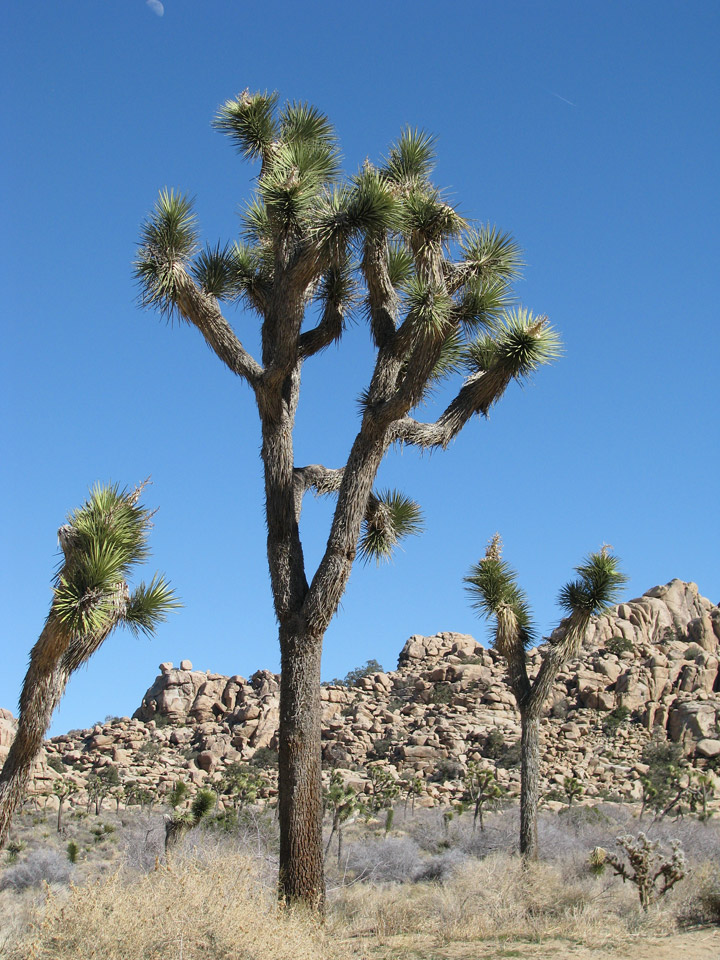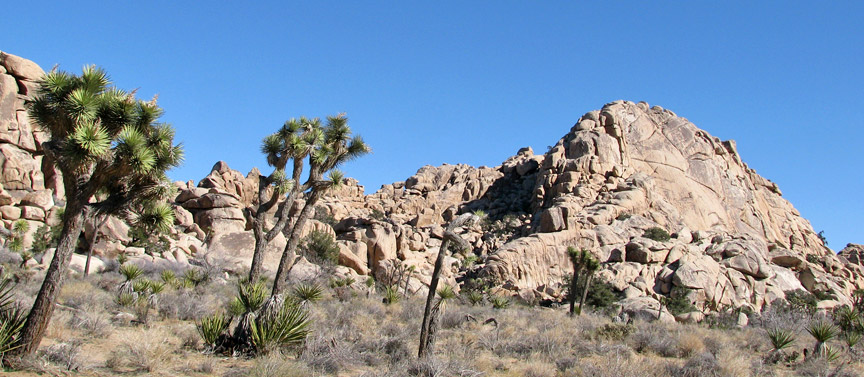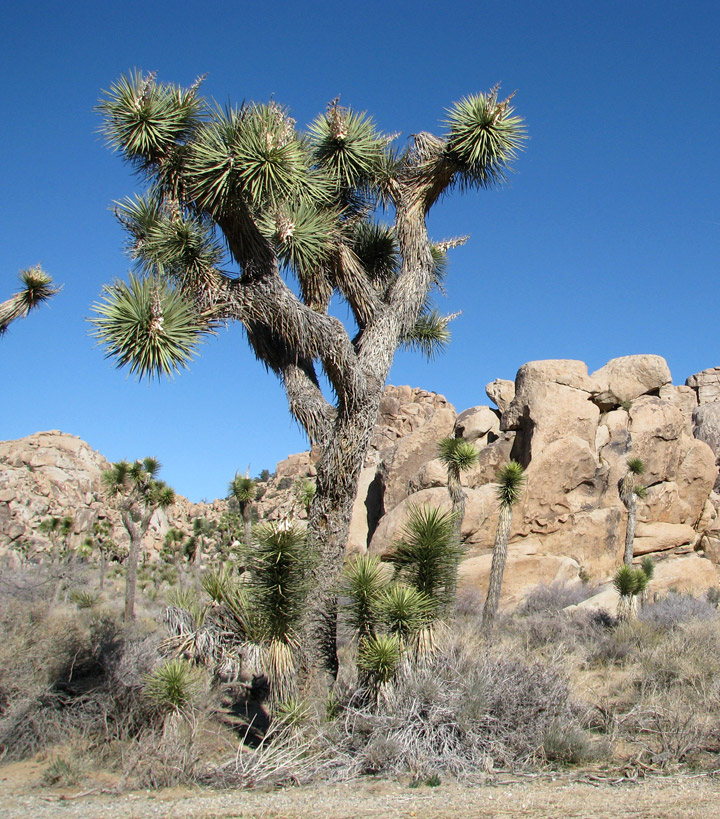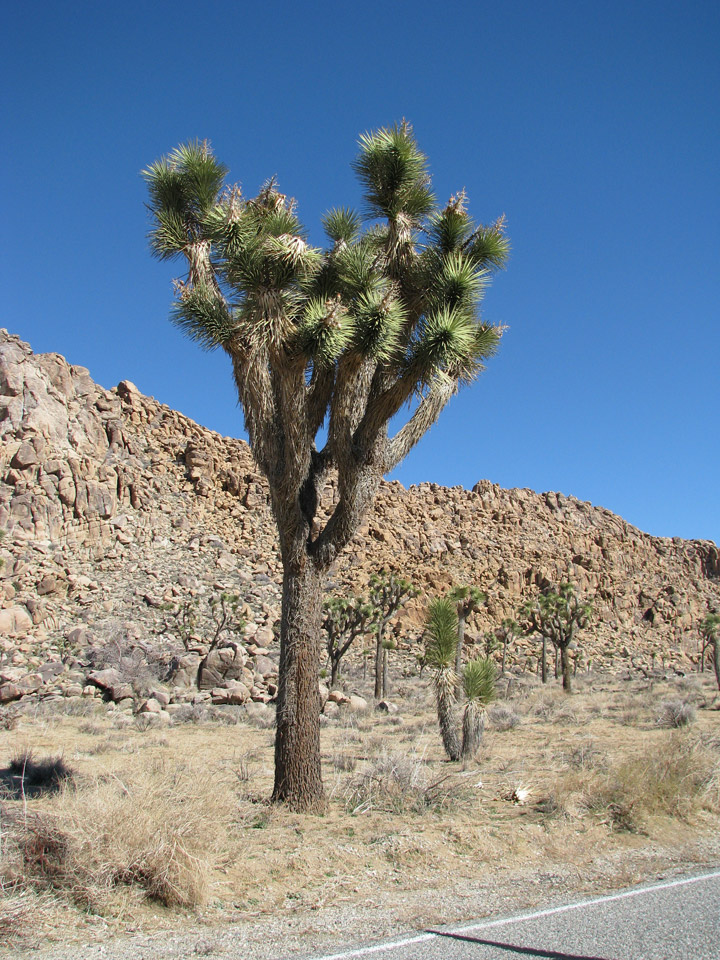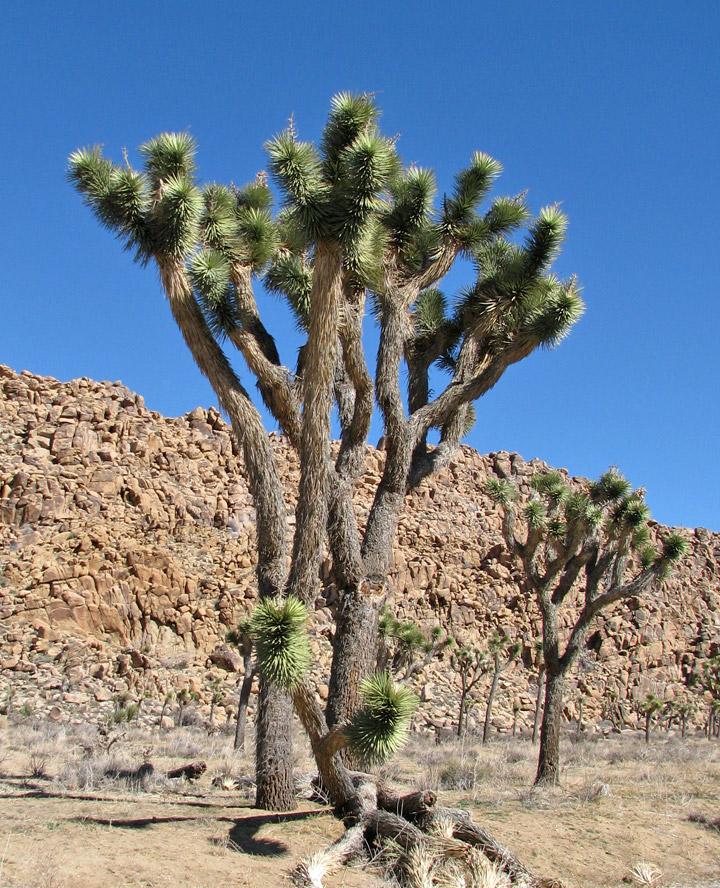

Joshua tree
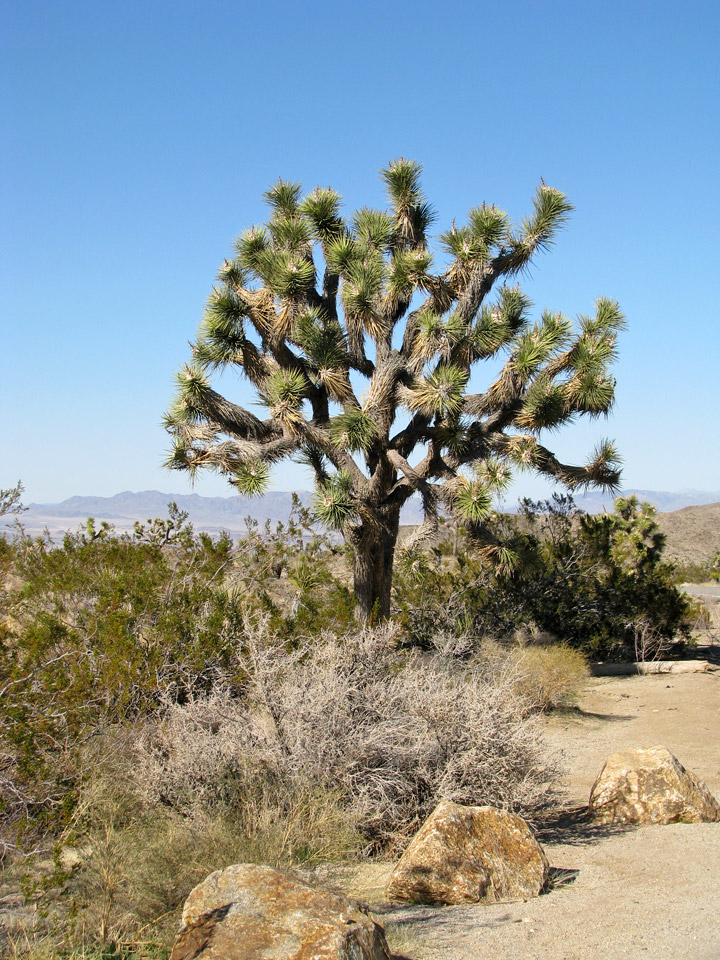
Joshua tree
Yucca brevifolia is a plant species belonging to the genus Yucca in the family Agavaceae. It is tree-like in habit, which is reflected in its common names: Joshua tree and Yucca palm and Tree yucca and Palm tree yucca. This monocotyledonous tree is native to southwestern North America in the states of California, Arizona, Utah and Nevada, where it is confined mostly to the Mojave Desert between 400-1,800 m (2,000-6,000 feet). It thrives in the open grasslands of Queen Valley and Lost Horse Valley in Joshua Tree National Park. There are two subspecies, including Yucca brevifolia ssp.jaegeriana Jaeger Joshua tree or Jaeger's Joshua tree or Pygmae Yucca. Other subspecies have been proposed but rejected by botanists, including one reduced to a form, Yucca brevifolia f. herbertii (Webber's Yucca or Herbert Joshua Tree).
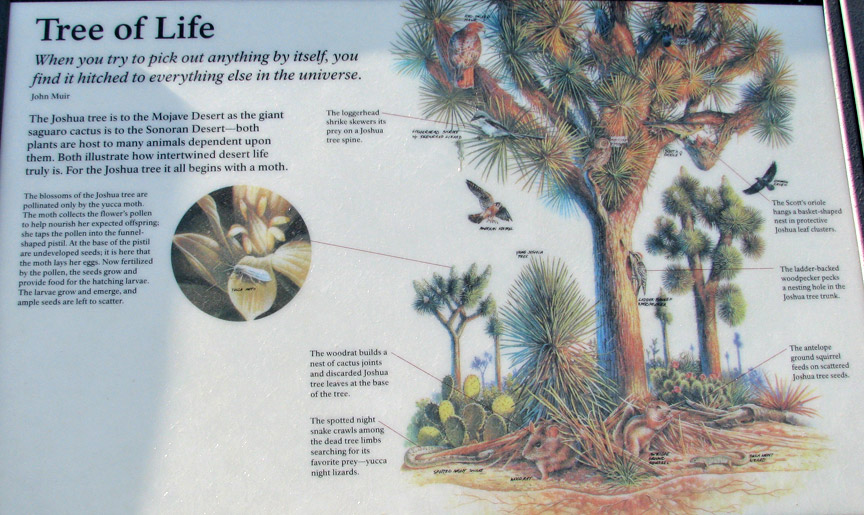
Joshua trees are slow growers; new seedlings may grow at an average rate of 7.6
cm (3.0 in) per year in their first ten years, then only grow about 3.8 cm (1.5
in) per year thereafter. The trunk of a Joshua tree is made of thousands of
small fibers and lacks annual growth rings, making it difficult to determine the
tree's age. This tree has a top-heavy branch system, but also has what has been
described as a "deep and extensive" root system, with roots possibly reaching up
to 11 m (36 ft) away. If it survives the rigors of the desert it can live for
hundreds of years with some specimens surviving up to a thousand years. The
tallest trees reach about 15 m tall. New plants can grow from seed, but in some
populations, new stems grow from underground rhizomes that spread out around the
Joshua tree.
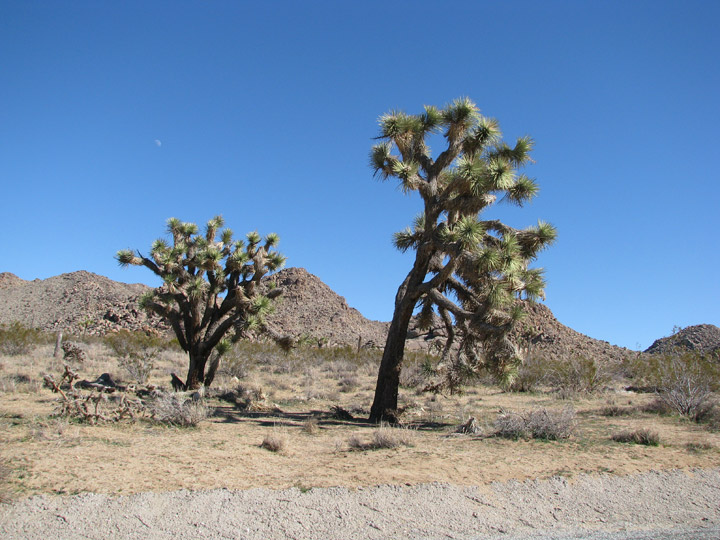
The leaves are dark green, linear, bayonet-shaped, 15-35 cm long and 7-15 mm
broad at the base, tapering to a sharp point; they are borne in a dense spiral
arrangement at the apex of the stems. The leaf margins are white and serrate.

The flowers are produced in spring from February to late April, in panicles
30-55 cm tall and 30-38 cm broad, the individual flowers erect, 4-7 cm tall,
with six creamy white to green tepals. The tepals are lanceolate and are fused
to the middle. The fused pistils are 3 cm tall and the stigma cavity is
surrounded by lobes. The fruit that is produced is green-brown, elliptical, and
contains many flat seeds. Joshua trees usually do not branch until after they
bloom (though branching may also occur if the growing tip is destroyed by the
yucca-boring weevil), and they do not bloom every year. Like most desert plants,
their blooming is dependent on rainfall at the proper time. They also need a
winter freeze before they will bloom.
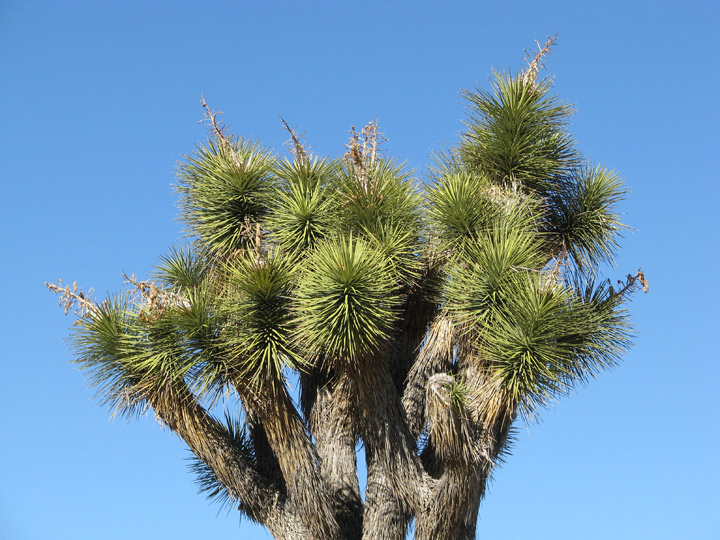
Once they bloom, the trees are pollinated by the yucca moth, which spreads
pollen while laying her eggs inside the flower. The moth larvae feed on the
seeds of the tree, but enough seeds are left behind to produce more trees. The
Joshua tree is also able to actively abort ovaries in which too many eggs have
been laid.

The Cahuilla Native Americans who have lived in the southwestern United States
for generations still identify with this plant as a valuable resource and call
it "hunuvat chiy’a" or "humwichawa". Their ancestors used the leaves of Y.
brevifolia to weave sandals and baskets in addition to harvesting the seeds and
flower buds for nutritious meals.

The name Joshua tree was given by a group of Mormon settlers who crossed the
Mojave Desert in the mid-19th century. The tree's unique shape reminded them of
a Biblical story in which Joshua reaches his hands up to the sky in prayer.
Ranchers and miners who were contemporary with the LDS immigrants also took
advantage of the Joshua tree, using the trunks and branches as fencing and for
fuel for ore-processing steam engines. It is also called Izote de desierto. It
was first formally described in the botanical literature as Yucca brevifolia by
George Engelmann in 1871 as part of the Geological Exploration of the Fortieth
Parallel.
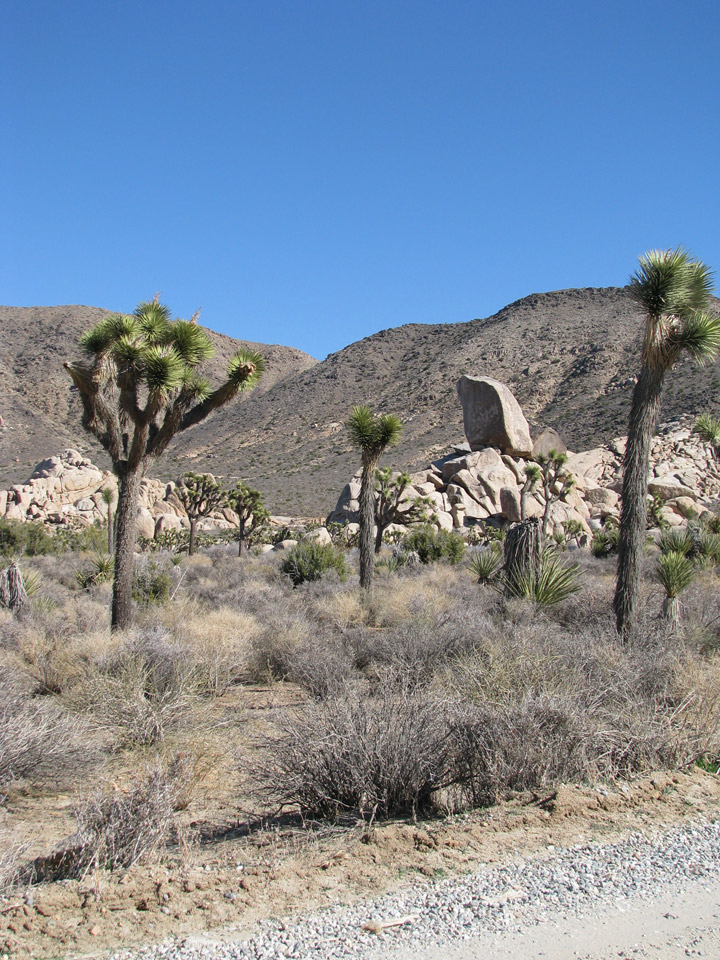
Yucca tree roots have saponin glycosides.
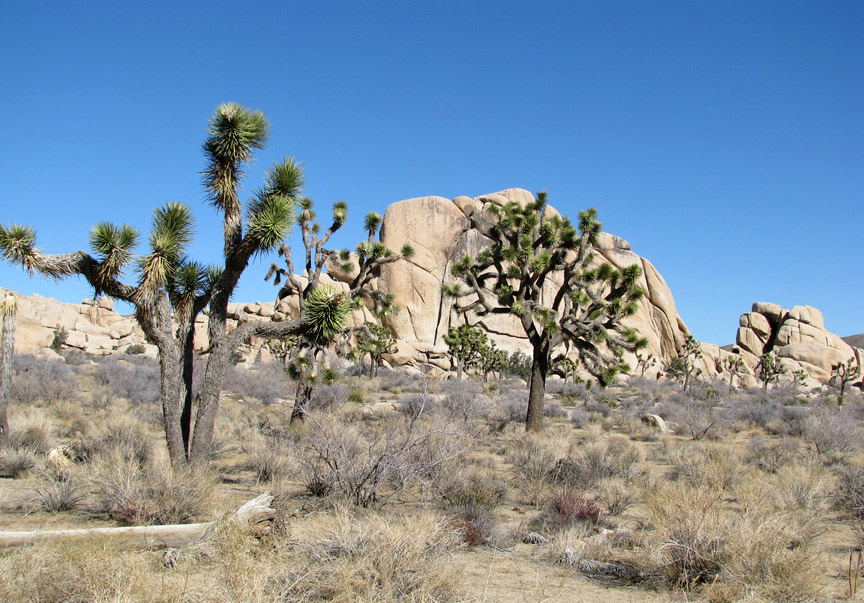
Yucca brevifolia is endemic to the Southwestern United States with populations
in western Arizona, southeastern California, southern Nevada, and southwestern
Utah. This range mostly coincides with the geographical reach of the Mojave
Desert. It occurs at altitudes between 400 and 1,800 m (2,000-6,000 feet).
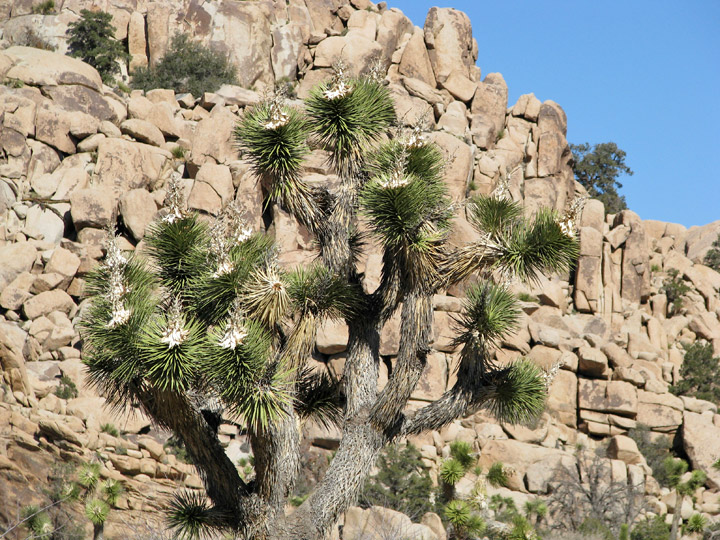
There is some concern from modeling that Joshua trees will be eliminated from
Joshua Tree National Park due to climate change, and that this will damage the
ecosystem of the park. There is also concern about the ability of the trees to
migrate to favorable climates due to the extinction of the giant ground sloth
13,000 years ago.
Text from Wikipedia
